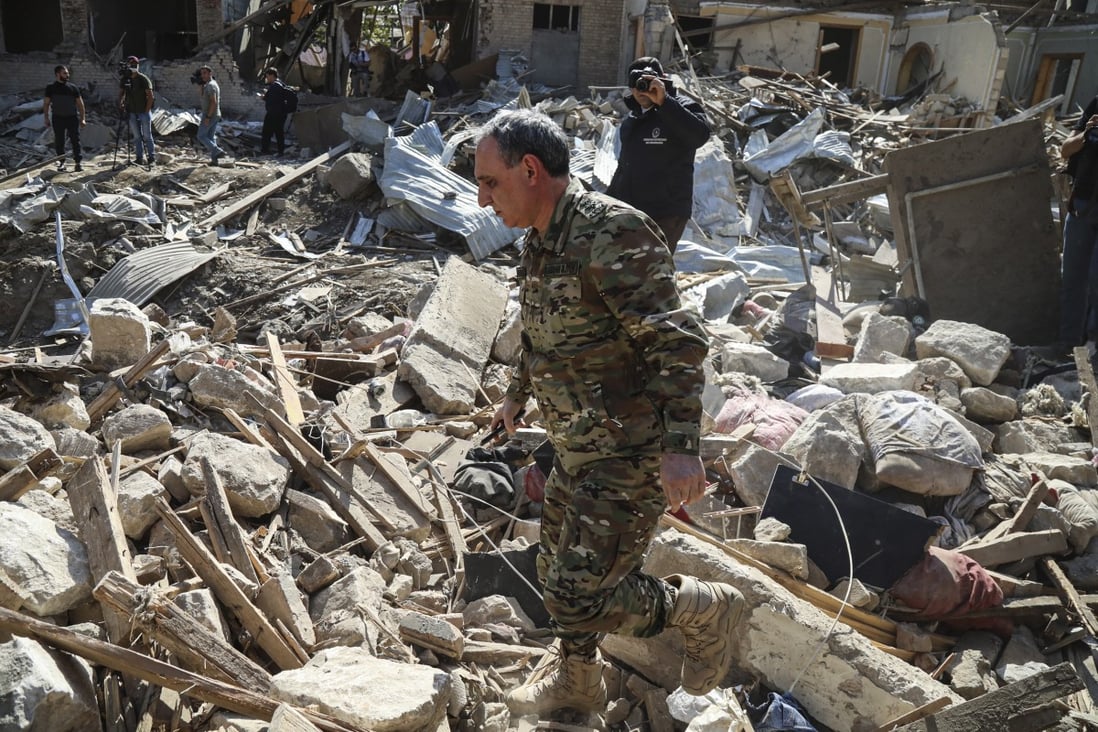13th December, 2020 18:07 IST
Written By Bhavya Sukheja

The Nagorno-Karabakh conflict is a reminder to the Chinese military that they need to carefully consider counter-strategy as wars of the 21st century will be different from the battles of the past. While citing an article published by a firm that supplies military equipment to the People’s Liberation Army (PLA), the South China Morning Post (SCMP) reported that an alarming lesson from the Armenia-Azerbaijan conflict, which concerns drones’ transformation of battlefields, shows that China needs a better counter-strategy. It is worth noting that the Nagorno-Karabakh conflict is the first in which drones deployed by one side turned the tide in the Azerbaijan-Armenia war.
According to reports, the ‘Naval and Merchant Ships’ article reviewed how the Armenian army was overwhelmed by enemy drones. Even though Armenia is superior to Azerbaijan in terms of conventional ground forces, the article noted that the Armenian army was easy prey for armed drones, especially Bayraktar TB2 drones that mounted precise attacks against targets in trenches and moving vehicles. The drones were also used for reconnaissance operations, which helped Azerbaijan to force an Armenian surrender within six weeks.
According to ANI, China is known for its use of drones in the military as well as in surveillance over Uyghurs. They are reportedly developing new drones with greater capabilities in terms of speed, altitude, endurance and autonomy. Moreover, China has also developed a new low-cost “suicide drone” that can be launched from a light tactical vehicle or helicopter in a swarm to attack a target.
First Published: 13th December, 2020 18:07 IST
Nagorno-Karabakh Conflict Shows Chinese Military Needs Better Counter-strategy: Report
Nagorno-Karabakh conflict is a reminder to the Chinese military that they need to carefully consider counter-strategy as wars will be different from the past
Written By Bhavya Sukheja

The Nagorno-Karabakh conflict is a reminder to the Chinese military that they need to carefully consider counter-strategy as wars of the 21st century will be different from the battles of the past. While citing an article published by a firm that supplies military equipment to the People’s Liberation Army (PLA), the South China Morning Post (SCMP) reported that an alarming lesson from the Armenia-Azerbaijan conflict, which concerns drones’ transformation of battlefields, shows that China needs a better counter-strategy. It is worth noting that the Nagorno-Karabakh conflict is the first in which drones deployed by one side turned the tide in the Azerbaijan-Armenia war.
According to reports, the ‘Naval and Merchant Ships’ article reviewed how the Armenian army was overwhelmed by enemy drones. Even though Armenia is superior to Azerbaijan in terms of conventional ground forces, the article noted that the Armenian army was easy prey for armed drones, especially Bayraktar TB2 drones that mounted precise attacks against targets in trenches and moving vehicles. The drones were also used for reconnaissance operations, which helped Azerbaijan to force an Armenian surrender within six weeks.
The article read, “In case of the Nagorno-Karabakh conflict, the ‘shield’ to counter drones was not used effectively. Although each side hit large numbers of enemy drones, neither had the capabilities to stop incoming drones from inflicting damage”.
It added, “Our military has a large number of drones of various types and is also facing the threat of advanced enemy drones.. compare with the drones we saw in the Nagorno-Karabakh conflict, the drone threat confronting us is more technologically advanced, harder to detect and defend”.
China’s ‘suicide drone’
Further, the article went on to suggest PLA that they should increase its awareness of the threat from drones and incorporate it into its training and strategy. It also suggested the Chinese army of building a multilayer detection network with anti-drone radars, blind compensation radars, radio detection stations and other infrared or acoustic measures in a bid to seamlessly monitor incoming drones in multiple locations in a wide range. Apart from detection, the article also recommended tactics such as electronic jamming, using LD2000 ground-based anti-aircraft defence weapons and scattering fake objects.According to ANI, China is known for its use of drones in the military as well as in surveillance over Uyghurs. They are reportedly developing new drones with greater capabilities in terms of speed, altitude, endurance and autonomy. Moreover, China has also developed a new low-cost “suicide drone” that can be launched from a light tactical vehicle or helicopter in a swarm to attack a target.
(Image & inputs: ANI)
https://www.republicworld.com/world...ary-needs-better-counter-strategy-report.htmlFirst Published: 13th December, 2020 18:07 IST





